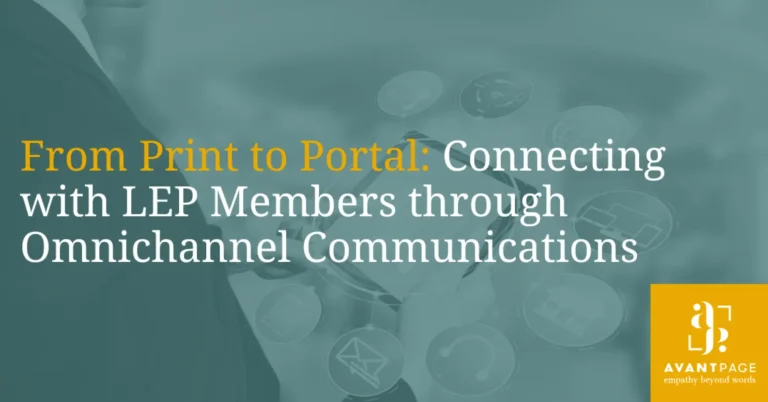Benefits of Human-In-The-Loop vs. Fully Automated Translation
Up until relatively recently, free machine translation tools were notoriously low quality—you’ve probably seen your fair share of posts poking fun at machine translation “fails” on social media. However, machine translation has improved significantly over the last decade, and it has become a part of many translators’ repertoires.
That said, machine translation is merely a tool to help translators move the process along faster—machine translation is still far from perfect on its own. These tools can produce deceptively fluent and easy-to-read text, but when you look closely at their output, you’ll begin to find errors and inaccuracies that human translators typically won’t make: They struggle with ambiguous language, fail to take into account the cultural context of the content, and it can be challenging to get them to stick to a consistent style guide.
That’s why it’s critical to have a human in the loop. Translation technology enables rapid-fire translation of long texts—in 2022, Google Translate processed 146 billion words a day, more than most human translators will translate for their entire career. But it still makes mistakes that humans need to fix.
“Human-in-the-loop” translation refers to the process of combining the efficiency of machine translation with the accuracy and cultural awareness of human translators. It’s an important approach to translation in an age where machine translation tools are as commonplace as they are today.
In this blog post, we’ll take a look at the benefits of human-in-the-loop translation and why organizations in healthcare, government, and law need to make sure there’s a human in the loop, rather than utilizing fully automated translation services.
Table of Contents
What is Fully Automated Translation?
What is Human-in-the-Loop Translation?
Benefits of Human-in-the-Loop Translation
How to Choose Between Human-in-the-Loop vs. AI Translations
When Fully Automated Translations Work Best
When Human Oversight is Non-Negotiable
Building a Translation Strategy That Scales
Frequently Asked Questions About Human-in-the-Loop vs. AI Translations
What is Fully Automated Translation?
As the name suggests, fully automated translation is any translation process conducted solely using translation technology, with little to no human oversight. With fully automated translation, a user simply inputs text in one language, selects the target language, and receives an automatically generated translation in a matter of seconds.
Using translation technology cuts costs and speeds up the translation process significantly—instead of paying somebody and waiting for them to translate a document in a matter of days, organizations can get a final translation in the blink of an eye, without having to pay much. But raw, unedited machine translation output is often rife with errors, especially for more complex documents. Because of this, fully automated translation tends to be best suited for repetitive texts that use relatively simple, unambiguous language.
The quality of machine translations also varies by language. In a recent study, researchers found that Google Translate had a 94% accuracy rate on English to Spanish translations of emergency discharge instructions, but 55% for translations into Armenian.
Still, when it comes to translating important medical documents, even a minor error can have serious consequences. That’s why it’s important to have a human in the loop to review automated translations and make sure they’re accurate.
What is Human-in-the-Loop Translation?
Like fully automated translation, human-in-the-loop approaches begin with a machine translation—but they don’t end there.
After first running the document through a machine translation tool, human translators and editors review the content to make sure it’s accurate. These individuals review the translation and the original document, editing it to make sure that the final product is accurate and reads smoothly. They typically use other tools like translation memory and quality assurance tests to make sure that the translation is as accurate as possible.
Human-in-the-loop workflows benefit from the speed and efficiency of machine translation, but they also cut out any errors introduced by the machine translation tool. This makes human-in-the-loop workflows particularly well-suited for important documents that need to be translated on a tight deadline without sacrificing quality, such as in healthcare and government settings.
Key Benefits of Human-in-the-Loop Translation
Human-in-the-loop translation has several advantages over fully automated translation. Here are a few key benefits to keep in mind:
- Human reviewers ensure accuracy and clarity when translating complex legal or medical jargon, while machine translation systems may struggle with complex or ambiguous language. Human reviewers can tap into their knowledge and resources to determine which terms work best in translation.
- While machine translation tools provide quick, literal translations of text, human reviewers can take cultural values into context. This allows them to localize a document so that it aligns with the target audience’s cultural norms.
- Regulations like HIPAA, the ADA, and Section 1557 of the Affordable Care Act may not allow government agencies or healthcare providers to use fully automated translations, out of concern for patient privacy and accuracy.
- Machine translation errors can have extremely serious consequences in healthcare and legal settings. Human-in-the-loop reviewers significantly reduce the risk of machine translation errors.
- Readers can usually tell when content has been machine translated without any human oversight—even if there are no mistranslations or inaccuracies, unedited machine translation often reads as awkward and clunky. By making sure there’s a human in the loop during the translation process, you help build the trust and confidence of the limited English proficiency individuals who need your services.
How to Choose Between Human-in-the-Loop vs. AI Translations
Human-in-the-loop and fully automated translation workflows can be used in different situations. While it’s good to have a human in the loop, it’s not always 100% necessary. Below, we’ll outline specific scenarios where one process works better than another.
When Fully Automated Translation Works Best
- Low-risk documents where errors won’t typically have grave consequences, such as FAQs, internal memos, and basic outreach
- High-volume content that is not particularly sensitive
- When the timeline is more important than the overall quality of the final document
When Human Oversight is Non-Negotiable
- Healthcare communications, such as patient discharge papers and consent forms
- Government policy, voting materials, legal notices
- Educational and refugee services
- Vulnerable or historically underserved populations
Building a Translation Strategy That Scales
While human oversight is always a good safety net, it’s not always 100% necessary. That’s why it’s important to work with a trusted language service provider that can guide you through carefully balancing automation with human quality assurance.
A language service provider can help you integrate human reviewers into existing translation workflows so that you’re not starting from scratch. Many modern translation management systems support hybrid models, allowing organizations to kick off projects with machine translation and then route the content to qualified human linguists for post-editing and quality control.
With a flexible workflow in place, low-risk, high-volume content like general outreach emails or web FAQs might move through a light-touch workflow, while sensitive legal notices or discharge instructions follow a stricter protocol with multiple human checks. This kind of scalable, tiered approach ensures you’re getting the best of both worlds: the speed and cost-efficiency of automation and the reliability and nuance that only human reviewers can provide.
Frequently Asked Questions About Human-in-the-Loop vs. AI Translations
What is human-in-the-loop translation?
Human-in-the-loop translation is a translation flow in which human translators, editors, and/or proofreaders review machine-translated content to make sure that it is accurate and culturally appropriate for the target audience.
Is machine translation accurate enough for healthcare or legal use?
No. While machine translation alone may be useful for simple, low-risk content, healthcare and legal documents typically require multiple human checks to make sure that no information has been mistranslated.
Can human-in-the-loop workflows still save time and money?
Yes—human-in-the-loop workflows still incorporate translation technology like machine translation and translation memory into the translation process, making the translation process go by much faster than it would without the technology. This process also lowers costs as translators do not need to spend as much time and effort on producing the final, translated document.
Is human-in-the-loop required by law in some cases?
Yes, there are several regulations that require organizations to use a human-in-the-loop workflow, particularly when it comes to sensitive documents that include patient health information. Organizations providing healthcare, legal, and government services should be especially careful to follow regulations relevant to their line of work, such as HIPAA, the ADA, and Section 1557 of the Affordable Care Act.
What’s the risk of using automated translation alone?
Fully automated translation is not always accurate. Depending on your target language, it may have a high error rate, and depending on how sensitive a given document is, these errors may have life-or-death consequences. For example, if patient discharge papers are not translated with the utmost accuracy, the patient may not take proper care of themselves after discharge, leading to higher readmission rates and even more severe medical outcomes.
Are there platforms that support human-in-the-loop translation?
Yes. Language service providers and human translators alike use translation management systems and computer-assisted translation tools to review and edit machine-translated text in a process known as machine translation post-editing services.
Conclusion
While machine translation tools can be speedy and cost-effective, they’re still far from perfect. Fully automated translation workflows sacrifice quality and accuracy in return for a quicker and cheaper final product. Human-in-the-loop translation balances this trade-off, effectively improving the overall quality of machine translations while still delivering a final product on a quick turnaround.
Accuracy isn’t just a technical matter—it’s a civil rights issue. When translations are inaccurate and error-ridden, individuals with limited English proficiency are unable to access important medical, legal, or government services. That’s why human-in-the-loop translation is critical, especially in these industries.
At Avantpage, we combine cutting-edge translation tools like AvantMemory with the knowledge of expert linguists to ensure every word resonates clearly and accurately. Whether you’re navigating compliance requirements or simply aiming for better multilingual communication, we’re here to support your goals with services like machine translation post-editing. Reach out at [email protected] or (530) 750-2040—or request a free quote to get started.


